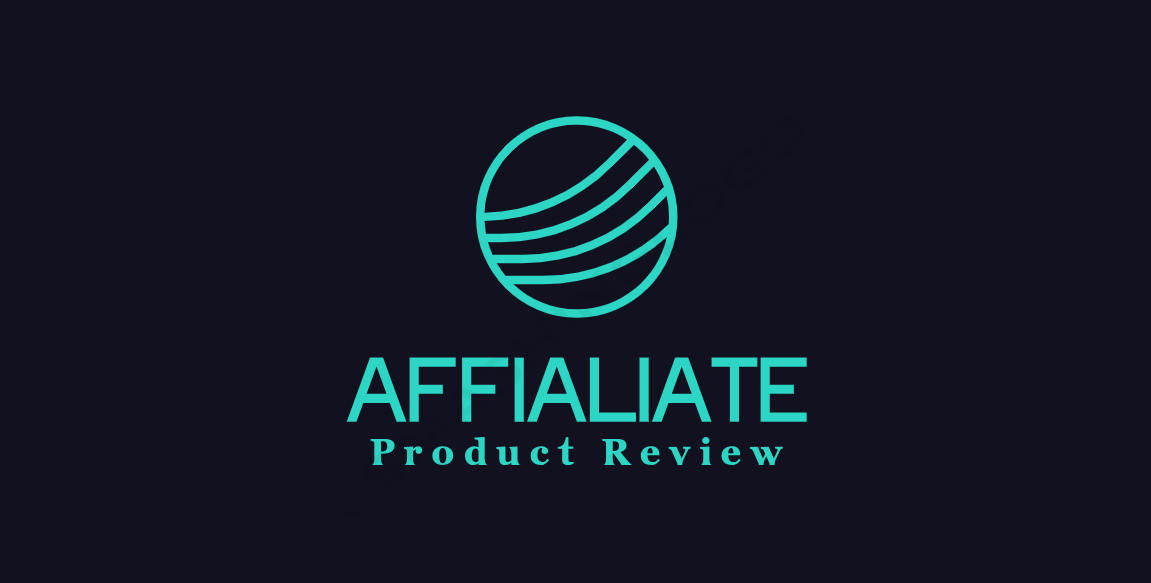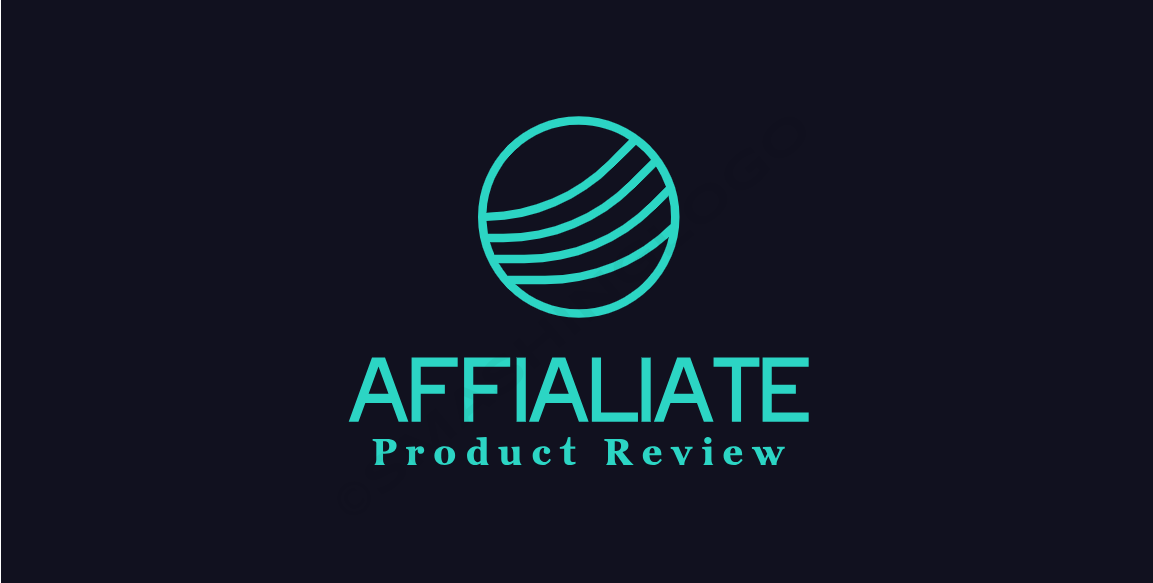Welcome to the comprehensive guide on mental health resources for 2024. In this guide, I will provide you with all the information and resources you need to navigate the complex landscape of mental health support in the United States. Whether you’re seeking therapy, counseling, medication management, or support groups, this guide aims to help you make informed decisions when choosing the right mental health resources for your needs.
Key Takeaways:
- Mental health resources play a crucial role in providing support and care for individuals facing mental health challenges.
- SAMHSA’s Community Mental Health Services Block Grant (MHBG) is a federal program that provides funding to states for the delivery of community-based mental health services.
- Capital One offers a comprehensive benefits package that includes enhanced mental health coverage for its employees.
- OPM.gov provides information on various health insurance plans that offer mental health coverage.
- In 2024, there will be expanded access to mental health care, with initiatives aimed at increasing affordability and availability of services.
Importance of Mental Health Resources
Mental health support plays a crucial role in promoting overall well-being and helping individuals navigate the challenges of mental health conditions. It is essential to have access to a wide range of mental health resources that cater to different needs and preferences. Choosing the right mental health resources is vital for ensuring effective treatment, support, and recovery.
There are various types of mental health resources available, including therapy, counseling, medication management, and support groups. These resources offer individuals the opportunity to find the most suitable form of support for their specific condition. By providing comprehensive care, mental health resources can address different aspects of mental wellness, including emotional, psychological, and social well-being.
When selecting mental health resources, it is important to consider factors such as the type of treatment needed, the availability of providers, and insurance coverage. Online guides and side-by-side comparison charts can be valuable tools in the decision-making process. Organizations like Capital One and OPM.gov provide helpful resources that empower individuals to make informed choices about their mental health support.
The Impact of Choosing the Right Mental Health Resources
“Choosing the right mental health resources can make a significant difference in an individual’s journey towards better mental well-being. It can lead to improved outcomes, better treatment experiences, and increased overall satisfaction with the support received.”
By selecting appropriate mental health resources, individuals can access tailored treatments, receive the necessary support, and ultimately improve their quality of life. It is essential to recognize that there is no one-size-fits-all approach when it comes to mental health. Each person’s experience is unique, and finding the right resources can ensure that their specific needs are met.
Mental Health Resources Table
| Resource | Features | Coverage | Accessibility |
|---|---|---|---|
| Therapy | Individual and group sessions | Dependent on insurance coverage | Varies by location and provider availability |
| Counseling | Emotional support and guidance | Dependent on insurance coverage | Varies by location and provider availability |
| Medication Management | Prescription and monitoring of medication | Dependent on insurance coverage | Varies by location and provider availability |
| Support Groups | Peer support and shared experiences | Typically covered under mental health benefits | Varies by location and group availability |
SAMHSA’s Community Mental Health Services Block Grant (MHBG)
The SAMHSA’s Community Mental Health Services Block Grant (MHBG) is a crucial federal program that plays a significant role in improving access to mental health care across the United States. This grant provides funding to states, supporting the delivery of community-based mental health services to individuals in need. The MHBG aims to enhance coordination of services, increase accessibility, and promote recovery for individuals with mental health conditions.
Through the MHBG, states have the opportunity to develop and expand comprehensive and integrated systems of care that address the diverse needs of their communities. This includes implementing evidence-based practices, ensuring cultural competence, and enhancing the quality of mental health services. The grant also supports the development of innovative approaches to mental health care, such as telehealth services and workforce development initiatives.
By investing in the MHBG, SAMHSA recognizes the importance of a comprehensive and accessible mental health care system. This grant empowers states to tailor their mental health services to the unique needs of their populations, ensuring that individuals receive the care and support they require. The MHBG not only improves access to mental health care but also strengthens the overall infrastructure for mental health services at the state level.
| Key Features of SAMHSA’s Community Mental Health Services Block Grant (MHBG) |
|---|
| Provides funding to states for community-based mental health services |
| Focuses on improving access, coordination, and recovery |
| Supports the development of comprehensive and integrated systems of care |
| Encourages the implementation of evidence-based practices |
| Promotes innovation in mental health care |
Overall, the SAMHSA’s Community Mental Health Services Block Grant (MHBG) plays a vital role in advancing mental health care in the United States. By providing states with the necessary resources and support, this grant enables the development of robust and inclusive systems of care that prioritize the well-being of individuals with mental health conditions.

Capital One’s Benefits Package for Mental Health
As awareness of mental health continues to grow, companies like Capital One are recognizing the importance of prioritizing the well-being of their employees. Capital One offers a comprehensive benefits package that includes enhanced mental health coverage, ensuring that their associates have access to the support they need. This commitment to mental health reflects the company’s dedication to fostering a healthy and supportive work environment.
One of the key features of Capital One’s benefits package is the provision of access to out-of-network mental health providers at a lower cost. This allows employees to seek treatment from a wider range of providers, ensuring they receive the care that best suits their needs. By reducing the financial barrier associated with out-of-network providers, Capital One is making mental health resources more accessible and affordable for their associates.
Capital One understands that mental health is just as important as physical health and has taken steps to include mental health coverage as part of their comprehensive benefits package. This coverage encompasses a range of mental health services, including therapy, counseling, and medication management. By providing access to these resources, Capital One is helping their employees address and manage their mental health needs effectively.
By offering a benefits package that prioritizes mental health, Capital One is setting an example for other companies to follow. It not only demonstrates their commitment to supporting their employees’ well-being but also recognizes the significant impact that mental health can have on overall productivity and satisfaction in the workplace. Capital One’s initiatives in providing enhanced mental health coverage are a positive step forward in promoting a healthier workforce and prioritizing the mental well-being of employees and their families.
OPM.gov’s Health Insurance Plans for Mental Health
When it comes to accessing mental health support, having comprehensive health insurance coverage is crucial. OPM.gov provides a range of health insurance plans that include coverage for mental health services. These plans are available to federal employees and eligible individuals, offering a wide selection of options to choose from.
The OPM.gov website features a helpful comparison tool that allows users to search for plans based on their location and enrollment type. This tool provides a comprehensive overview of available health insurance plans, highlighting their specific mental health coverage and benefits. By utilizing this resource, individuals can easily compare different plans and make informed decisions regarding their mental health care.
Whether you’re looking for therapy, counseling, medication management, or other mental health services, OPM.gov’s health insurance plans offer a range of options to meet your needs. With their user-friendly interface and detailed plan information, OPM.gov makes it easier than ever to find the right mental health coverage for you and your family.
| Plan Name | Monthly Premium | Out-of-Pocket Maximum | Mental Health Coverage |
|---|---|---|---|
| Standard Option | $200 | $2,000 | Comprehensive coverage for therapy, counseling, and medication management |
| High Deductible Health Plan | $150 | $3,000 | Access to a network of mental health providers with discounted rates |
| Consumer Driven Health Plan | $100 | $4,000 | Flexible spending account for mental health expenses |
As mental health continues to be a priority for individuals and organizations alike, OPM.gov’s health insurance plans for mental health play a crucial role in ensuring access to necessary care. By exploring the available options and choosing a plan that meets their specific needs, individuals can take proactive steps towards prioritizing their mental well-being.
Expanded Access to Mental Health Care in 2024
In 2024, we can expect to see expanded access to mental health care, as initiatives are put in place to improve affordability and availability of services. These efforts aim to address the growing need for mental health support and ensure that individuals have access to the care they require. Let’s take a closer look at some of the key developments we can anticipate in the coming year.
One significant advancement is the enhancement of insurance coverage for mental health services. This includes lower costs for seeing out-of-network providers, making it easier for individuals to access the care they need regardless of their location. Additionally, there will be increased contribution limits for Health Savings Accounts (HSAs) and Flexible Spending Accounts (FSAs), empowering individuals to allocate more funds towards mental health expenses.
Telehealth services will also play a vital role in expanding access to mental health care in 2024. With the integration of technology, individuals will have the option to receive therapy and counseling services remotely, eliminating geographical barriers and increasing convenience. This will be particularly beneficial for those living in rural areas or with limited access to mental health providers.
| Initiative | Description |
|---|---|
| Enhanced insurance coverage | Lower costs for seeing out-of-network providers and increased contribution limits for HSAs and FSAs. |
| Telehealth services | Increased accessibility to therapy and counseling services through remote consultations. |
As we look ahead to 2024, it is evident that there will be significant improvements in the accessibility and affordability of mental health care. These initiatives seek to break down barriers and ensure that individuals can receive the care and support they need. By expanding access to mental health services, we can work towards a society where mental well-being is prioritized and everyone has the opportunity to thrive.
Choosing the Right Mental Health Resources
When it comes to accessing mental health support, choosing the right resources can make a significant difference in your journey towards well-being. It’s essential to consider several factors to ensure that you find the most suitable options for your needs. Here are some key considerations to keep in mind:
1. Type of Treatment Needed
First, evaluate the type of treatment you require. Do you need therapy, medication management, counseling, or support groups? Understanding your specific needs will help you narrow down the available resources that align with your requirements. Consider whether you prefer in-person sessions, telehealth options, or a combination of both.
2. Availability of Providers
Next, assess the availability of mental health providers in your area. Look for resources within a reasonable distance from your home or workplace to ensure convenient access. Consider factors such as wait times, appointment availability, and the expertise of the providers. Online platforms and directories can help you find professionals who specialize in the specific area you need support in.
3. Insurance Coverage
Insurance coverage plays a vital role in accessing mental health resources. Review your insurance policy to understand what services and providers are covered. Check if there are any restrictions, such as the need for pre-authorization or limitations on the number of sessions. Comparing different plans and their coverage for mental health services can help you make an informed decision.

4. Personal Preferences
Consider your personal preferences when selecting mental health resources. Some individuals may prefer a certain therapeutic approach or gender-specific providers. Reflect on what makes you feel comfortable and supported, as this can greatly enhance the effectiveness of your treatment. It’s also important to choose resources that align with your cultural or religious beliefs if that is important to you.
Taking the time to research and evaluate your options is crucial when choosing the right mental health resources. Online guides, side-by-side comparison charts, and insights from organizations like Capital One and OPM.gov can provide valuable information to assist you in making an informed decision. Remember, finding the right resources is an essential step towards prioritizing your mental well-being.
Comprehensive Mental Health Services
Mental health services encompass a wide range of treatment options designed to address various mental health conditions and provide holistic care for individuals in need. These services aim to support individuals in their journey towards improved mental well-being. Here are some key treatment options available as part of comprehensive mental health services:
Therapy and Counseling
Therapy and counseling play a crucial role in helping individuals navigate and overcome mental health challenges. Different types of therapy, such as cognitive-behavioral therapy (CBT), dialectical behavior therapy (DBT), and psychodynamic therapy, are tailored to address the unique needs of individuals. Counseling sessions provide a safe space for individuals to express their thoughts and emotions, learn coping skills, and develop strategies to manage their mental health effectively.
Medication Management
Medication management involves the use of prescribed medications to alleviate symptoms of mental health conditions. Psychiatrists and other healthcare providers work closely with individuals to determine the most appropriate medication, dosage, and duration of treatment. Regular monitoring and adjustments ensure that individuals receive the optimal benefits of medication therapy while minimizing potential side effects.
Crisis Intervention
Crisis intervention services provide immediate support to individuals experiencing a mental health crisis. Crisis hotlines, mobile response teams, and crisis stabilization units are available to offer emergency assistance and connect individuals with appropriate resources. These services help individuals cope with acute distress, prevent harm to themselves or others, and facilitate access to ongoing mental health support.
| Treatment Option | Description |
|---|---|
| Therapy and Counseling | Individualized therapy sessions and counseling support to address mental health challenges and develop coping strategies. |
| Medication Management | Prescribed medications to alleviate symptoms of mental health conditions, monitored and adjusted as needed. |
| Crisis Intervention | Immediate support during mental health crises, including crisis hotlines, mobile response teams, and crisis stabilization units. |
Comprehensive mental health services aim to provide individuals with a range of treatment options to address their unique needs. By combining therapy, medication management, and crisis intervention, individuals can receive the support necessary to effectively manage their mental health conditions. It is important to consult with healthcare professionals to determine the most appropriate treatment plan and to access the comprehensive mental health services available.
Mental Health in the Workplace: The Importance of Employee Benefits
Mental health is a critical aspect of overall well-being, and employers are increasingly recognizing the importance of supporting their employees’ mental health. By providing comprehensive employee benefits, organizations like Capital One are taking proactive steps to create a workplace environment that prioritizes mental well-being.
Employee benefits that focus on mental health can include a range of resources and support systems. These may encompass access to mental health professionals, counseling services, and wellness programs designed to promote emotional resilience. Companies like Capital One understand that a healthy workforce is a productive workforce, and investing in mental health benefits can lead to increased employee satisfaction and retention.
Creating a supportive work environment that addresses mental health also involves offering flexible work arrangements to accommodate employees’ needs. This may include flexible hours, remote work options, or the ability to take mental health days when necessary. By implementing these measures, employers demonstrate their commitment to the overall well-being of their workforce.
Table: Comparison of Mental Health Employee Benefits
| Company | Benefits | Highlights |
|---|---|---|
| Capital One | Access to mental health professionals, counseling services, wellness programs | Lower cost out-of-network mental health providers, flexible work arrangements |
| Company B | On-site mental health support, employee assistance programs | 24/7 access to counselors, confidential consultations |
| Company C | Wellness incentives, stress management programs | Regular mental health workshops, mindfulness training |
Table: Comparison of Mental Health Employee Benefits showcasing the different offerings from companies like Capital One, Company B, and Company C. The table highlights the variety of benefits available, including access to mental health professionals, counseling services, wellness programs, on-site support, and flexible work arrangements.
In conclusion, prioritizing mental health in the workplace through comprehensive employee benefits is crucial for fostering a supportive and inclusive work environment. By offering access to mental health resources, counseling services, and flexible work arrangements, employers like Capital One are investing in the well-being of their employees. As the understanding of mental health continues to evolve, it is essential for organizations to adapt and provide the necessary support for their workforce.
Government Initiatives for Mental Health Support
In recognition of the growing mental health challenges faced by individuals and communities, the US government has implemented various initiatives to support mental health and well-being. These initiatives aim to improve access to care, reduce stigma, increase funding for mental health programs, and promote evidence-based practices. By prioritizing mental health support, the government is working towards enhancing mental health services across the country.
One notable government initiative is the SAMHSA Community Mental Health Services Block Grant (MHBG). This federal program provides funding to states for the delivery of community-based mental health services. The MHBG focuses on improving access to mental health care, enhancing coordination of services, and promoting recovery for individuals with mental health conditions. Through this grant, states are able to develop and expand comprehensive and integrated systems of care, ensuring that individuals receive the necessary support and treatment they need.
Another government initiative is the allocation of resources and funding towards mental health research and innovation. The National Institute of Mental Health (NIMH), for example, conducts and supports research on mental health disorders, treatment approaches, and prevention strategies. By investing in research, the government aims to advance understanding of mental health conditions and identify more effective ways to provide support and treatment.
| Government Initiative | Description |
|---|---|
| SAMHSA Community Mental Health Services Block Grant (MHBG) | A federal grant program that provides funding to states for community-based mental health services. |
| National Institute of Mental Health (NIMH) | Conducts and supports research on mental health disorders, treatment approaches, and prevention strategies. |
| Substance Abuse and Mental Health Services Administration (SAMHSA) | Works to reduce the impact of substance abuse and mental illness on communities through prevention, treatment, and recovery support. |
These government initiatives are instrumental in addressing the mental health needs of individuals and promoting overall well-being. By investing in mental health support and research, the government is taking steps towards creating a more inclusive and accessible mental health care system for all.
Future Trends in Mental Health Resources
The field of mental health resources is continuously evolving, and the future holds promising advancements that aim to improve access and effectiveness of care. These trends are driven by a growing understanding of mental health, advancements in technology, and the recognition of the importance of holistic well-being.
Integration of Telehealth Services
One significant trend in mental health resources is the increased integration of telehealth services. Telehealth allows individuals to access mental health support remotely, eliminating geographical barriers and increasing convenience. Through video calls, online therapy platforms, and mobile apps, individuals can receive therapy, counseling, and support from the comfort of their own homes. This trend is especially relevant in the wake of the COVID-19 pandemic, which has accelerated the adoption of telehealth.
Advancements in Digital Mental Health Platforms
Digital mental health platforms are also on the rise, offering a range of resources and tools to support mental well-being. These platforms provide access to self-help resources, guided therapy programs, meditation and mindfulness exercises, and peer support communities. The use of artificial intelligence and machine learning algorithms helps personalize these platforms to individual needs, making mental health resources more accessible and tailored.
Personalized Treatment Approaches
As our understanding of mental health deepens, there is a growing recognition that one size does not fit all when it comes to treatment. Future trends in mental health resources will focus on personalized treatment approaches that consider an individual’s unique needs, preferences, and circumstances. This may include the use of genetic testing to determine optimal medication options, the integration of lifestyle interventions such as diet and exercise, and the incorporation of alternative therapies like art and music.
The advancement of mental health resources is a positive step towards addressing the growing mental health challenges faced by individuals and communities. By embracing emerging trends and technologies, we can create a future where mental health support is accessible, effective, and tailored to individual needs.

Conclusion
In conclusion, the Mental Health Resources: A Full Comparative Guide for 2024 provides individuals with a comprehensive overview of available mental health resources. This guide is a vital tool for navigating the complex landscape of mental health support in the US. With updated information on various resources, individuals can compare their features, coverage, and accessibility to make informed decisions.
It is crucial to prioritize mental health and access the right resources for effective treatment and support. By utilizing the information and tools provided in the Comparative Guide, individuals can find the best mental health resources for their specific needs. Whether it’s therapy, counseling, medication management, or support groups, this guide has it covered.
Looking ahead to 2024, the Comparative Guide highlights the expanded access and advancements in mental health care. With initiatives aimed at increasing affordability and availability of services, individuals can expect improved insurance coverage and greater allocation of funds towards mental health expenses. The future of mental health resources is bright, with innovations such as telehealth services, digital platforms, and personalized treatment approaches on the horizon.
As we move forward, it is important to continue prioritizing mental health and utilizing the resources available. The Comparative Guide serves as a valuable tool, offering comprehensive information and assistance to individuals seeking mental health support. By leveraging this guide and making informed decisions, individuals can navigate the world of mental health resources with confidence and find the care they need.
FAQ
What is the purpose of the Mental Health Resources: A Full Comparative Guide for 2024?
The purpose of the guide is to provide comprehensive information and resources for navigating mental health support in the US, comparing their features, coverage, and accessibility.
What services do mental health resources offer?
Mental health resources offer a range of services, including therapy, counseling, medication management, and support groups.
What is the SAMHSA’s Community Mental Health Services Block Grant (MHBG)?
The MHBG is a federal program that provides funding to states for the delivery of community-based mental health services, aiming to improve access, enhance coordination, and promote recovery.
What mental health benefits does Capital One offer its employees?
Capital One offers enhanced mental health coverage, including access to out-of-network providers at a lower cost, to support the mental well-being of its associates and their families.
Where can I find information on health insurance plans with mental health coverage?
OPM.gov provides information on various health insurance plans with mental health coverage for federal employees and eligible individuals.
What are the future advancements in mental health resources?
Future advancements may include increased telehealth services, digital mental health platforms, personalized treatment approaches, and greater integration with primary care.
How do I choose the right mental health resources?
It is important to consider factors such as the type of treatment needed, provider availability, insurance coverage, and personal preferences. Online guides and comparison tools can assist in making informed decisions.
What services are included in comprehensive mental health care?
Comprehensive mental health care includes therapy, counseling, medication management, crisis intervention, and support groups to address various mental health conditions.
How do employers support mental health in the workplace?
Employers like Capital One prioritize mental health by offering employee benefits such as access to mental health resources, counseling services, wellness programs, and flexible work arrangements.
What government initiatives support mental health?
The US government implements initiatives like the SAMHSA’s MHBG to improve access, reduce stigma, increase funding, and promote evidence-based practices in mental health support.
What can we expect in the future of mental health resources?
The future may see continued advancements, including increased accessibility, cost-effectiveness, and personalized approaches to mental health resources.
How can I access the Mental Health Resources: A Full Comparative Guide for 2024?
The comprehensive guide can be accessed to find updated information and resources for navigating mental health support in the US.
How can I find the best mental health resources for my needs?
Utilizing the information and tools provided by organizations like Capital One and OPM.gov can assist in making informed decisions and finding the best mental health resources for specific needs.





